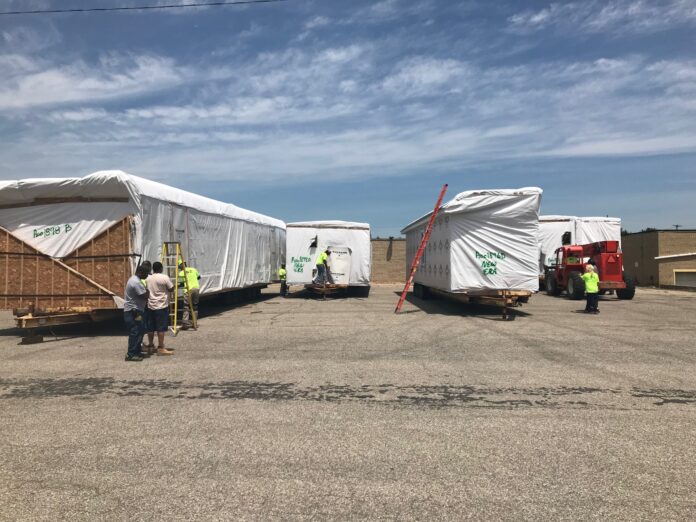What every builder needs to know before dropping modules onto an urban lot.
- Inner-city modular projects require early planning for staging yards, route logistics and street or crane access.
- Expect added complexity from power lines, parked cars, narrow roads and local officials.
- Communication with neighbors, city staff and inspectors will minimize disruption, cost and regulatory resistance.
Modular construction is well-suited to urban lots because of the compressed schedule — neighbors and municipalities appreciate the reduced time of disruption, compared to a conventional build. However, urban sites also present unique challenges.
We talked with two experts who have extensive experience using modular construction in the city. Below, they offer advice for building in this environment and share some pitfalls to watch out for.
You’ll Need a Staging Yard
Inner-city lots tend to be small, but some of them might surprise you with quite how tight they are. David Allen, President of Innovalab Development in Rockford, Michigan, describes the lots for three modular homes that he set in 2024 in Hamtramck, a suburb of Detroit, Michigan: “The homes in Hamtramck are five feet apart. All three lots had houses on both sides, so we had to spin the boxes and land them on the foundation between these two 5-foot gaps,” he recalls
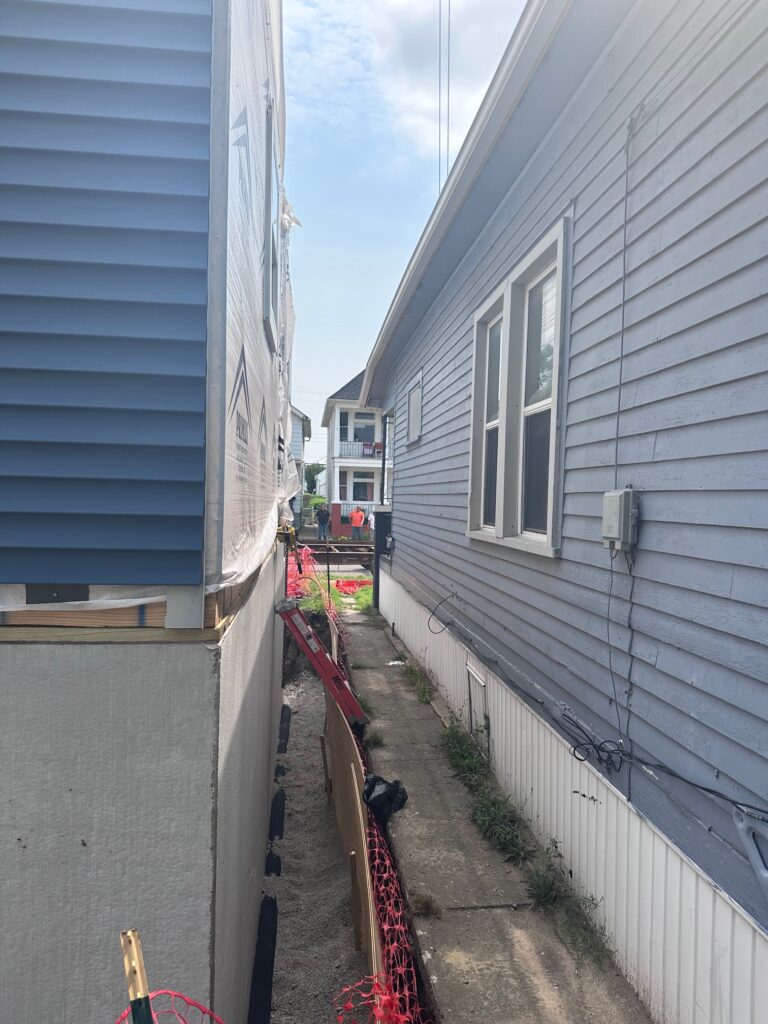
Staging the modules before they’re set is part of the process. “This is the number one problem in the urban context,” says Allen. “Finding a place to store modules before installation can be extremely difficult.” (See “Staging Yard Management” in this issue.)
How difficult varies from city to city. Andrew Holmes, VP of Construction at Blockhouse in Pittsburgh, Pennsylvania says that, in his experience, “There are usually spaces somewhere nearby, but you have to be creative.”
Finding a spot can take legwork. “We’ve staged in lots that weren’t being used, but we had to look through city records to find who held the deed. Sometimes, the owners were in a different state. We negotiated with them to get permission to use their property and paid them a rental fee. We’ve also been able to use city-owned land, and retail spaces’ parking lots.”
It’s important to visit the lot in person before committing to it. As an example, Allen describes a big job in Cincinnati, Ohio. He had looked at the area around the site multiple times using Google Street View and saw an empty lot right next to the jobsite that was owned by the land bank in the city of Cincinnati. “So, I said, great! We’ll store them here.”
It was too good to be true. “Once I got to the site in person, I realized that between the two lots there was a 4-foot-high retaining wall,” he says. Given the distance from the crane to the foundation, the extra height meant “we would’ve needed a 300-ton crane, which was cost prohibitive,” Allen says.
How close should the staging yard be to the site? “A quarter of a mile or less would be good,” Allen says. “The set crew can pick up the module from the staging area and tote it over to the site. If it’s farther away, then you’ll need a transportation company to move the boxes when the set crew’s ready. That adds costs and is a logistical nightmare.”
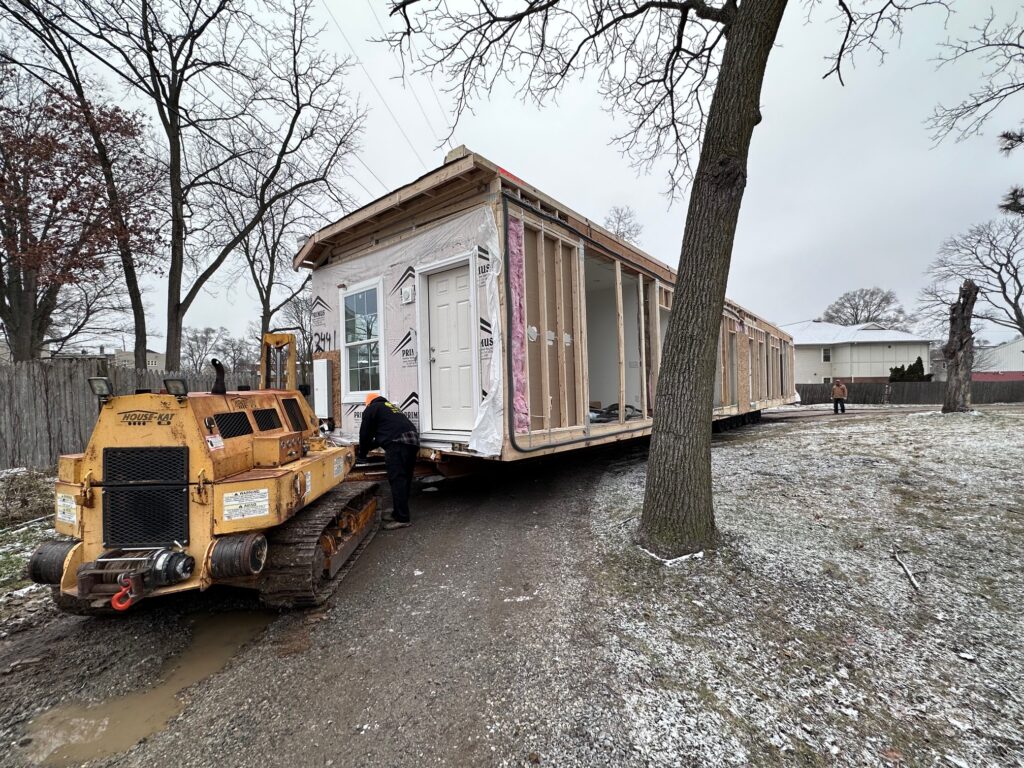
Planning the Route
The route to the site also needs to be researched. “In the city, we typically have to get police escorts, and they need to be organized in good time,” Holmes says. “You always need to inform the police of the route so they’re not surprised — if they’re not comfortable, they could shut you down.”
Police escorts add cost and complications. “You’re hiring an off-duty cop for the day. You have to become a vendor with the police and submit insurance, which takes time and effort. We try to get that started weeks, if not months, in advance,” Holmes says.
As well as communicating with the police, Allen adds, “You should immediately contact the city and find out if they have any use restrictions on certain roads. That information will help the transportation company.”
Again, preparation is key. “I walk the streets around the site to determine whether we need to close the street off. In that case, I have to go to city or the police department.” He says they need to close the road about half the time, based on how narrow it is.
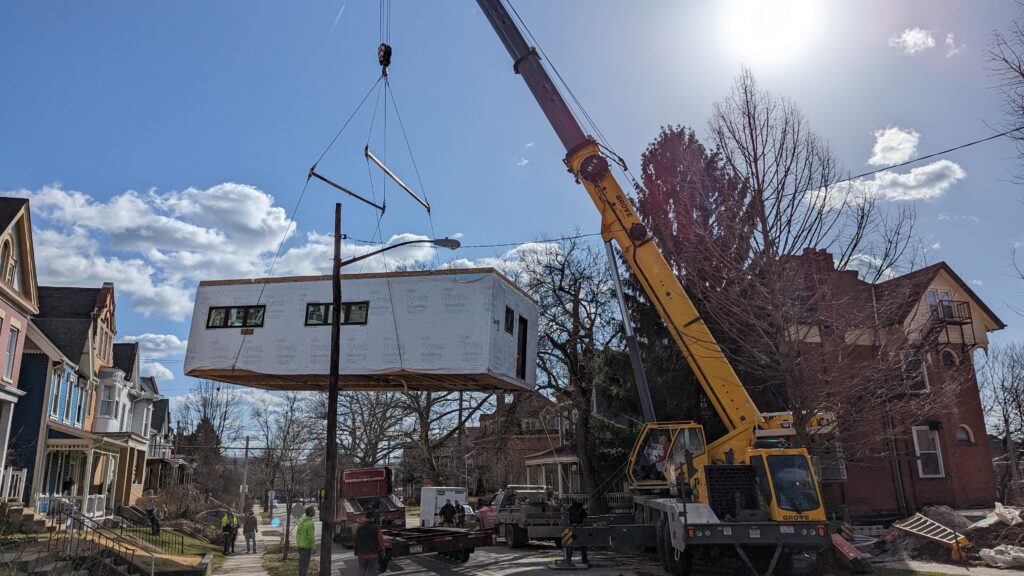
Photo courtesy of Blockhouse
Removing Parked Cars
In a residential area, cars are often parked on the street, presenting obstacles for the set crew. Arrangements need to be made in advance to ensure the street will be clear on set days.
“We work with the city to get special permits so there’s no on-street parking allowed for those couple of days,” Holmes says. His team also talks to the neighbors in person. “We knock on doors and let people know that in about 30 days, they won’t be able to park on the street.” He acknowledges that it’s disruptive, but “we try to be nice and get out ahead of this. There isn’t a cost to that other than your time, or an employee’s time.”
Holmes say that neighbors appreciate the consideration — and are more likely to comply. “We’ve only once had to call the police and have a car towed,” he says.
Dealing With Power Lines
Another obstacle in urban areas is power lines. “In the city, they are always a problem,” Holmes says. If the power lines are on the opposite side of the street from where you’re working, “they’re not directly in the way, but they could still cause problems, given the way the module is lifted into the air and oriented to get it onto the site.”
When they’re on the same side of the street, either you lift the modules over the power lines, or pay to have the utility company de-energize and take down the power lines down. If you lift the modules over the power lines, the crane will need to be further away, which means a larger crane will be needed. “And a larger crane is more expensive, is harder to get to the site, and is more likely to wreck the street,” according to Holmes. However, he says that the cost to take down the power lines for the day is in the realm of $20,000.
Neighbors also hate the disruption of having no power for a day. Holmes says, “Not only are you not allowed to park in front of your house, but we’re also gonna kill your power — and we’re gonna hope we get this done in one day.”
Will the Crane Fit?
In many cases, urban lots aren’t big enough for a crane to be on the lot, so it needs to be on the street. Depending on street width, this might necessitate closing the road, as mentioned above. But there are other factors to consider, too.
Holmes says, “If you set up a crane in the street, you need to protect the pavement.” The weight of the crane plus the weight of the module will be transferred through the crane’s outriggers to the street.
The solution is to use crane mats, which are made of plastic or recycled lumber, under the outriggers. Allen says, “The bigger mats are four feet by eight feet, and they’re something like half an inch to three quarters of an inch thick. They disperse the weight of the crane and its load.”
Although the cranes themselves are four-wheel drive and can effectively maneuver into almost all spaces Allen says that “the bigger issue is that a flatbed semi-truck goes alongside it, which holds all the counterweights. If you don’t have space for that truck with the counterweights, you could get a crane onsite and realize you literally can’t use it.”
Preparing the Neighbors
Holmes cautions that talking with the neighbors in person about the issues above isn’t a “magic bullet.” People still get upset and forget to move their cars. “But when you talk with them ahead of time, they are more accepting when it does happen.” What erodes goodwill is unexpected disruption. People get really upset when surprised, and are less likely to comply.
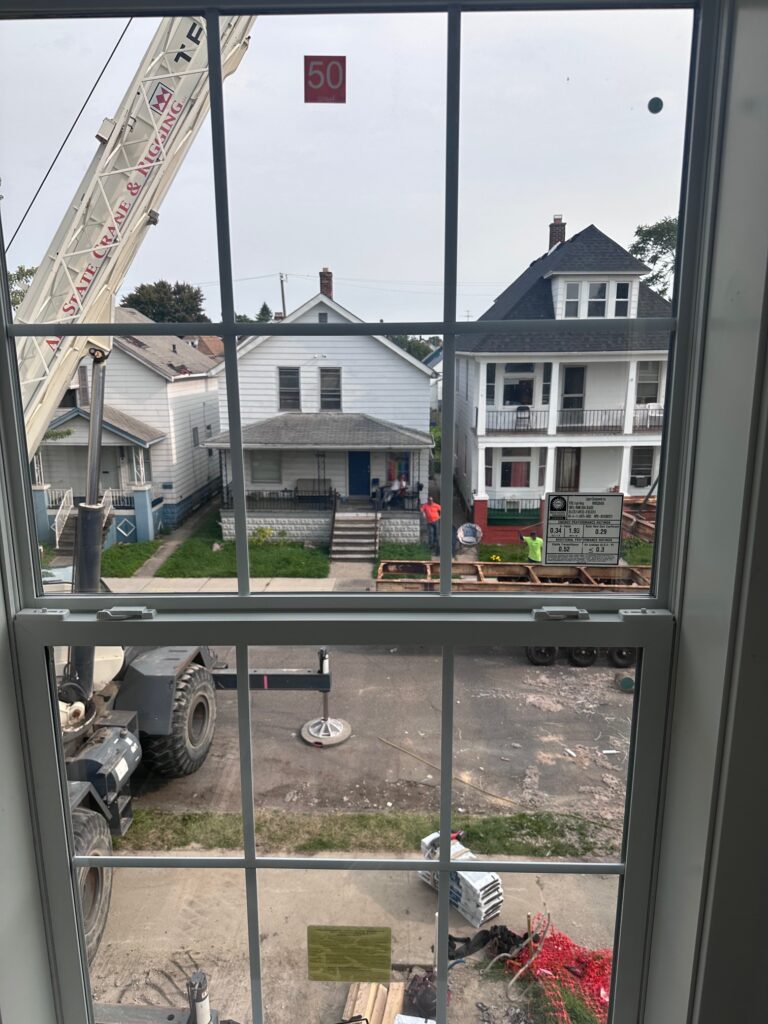
Photo courtesy of David Allen
Allen offers some tips for getting neighbors onboard. “I take a stack of my business cards. I introduce myself, tell them what we’re doing, and give them my card. I tell them to call me if they have any problems, or if we’re blocking or disrupting anything.” He also takes another step to maintain goodwill. “The day of the set, we make it a big party. We set up a 10 by 10-foot tent and bring in donuts and coffee in the morning. If it goes later, we’ll bring in Little Caesars for lunch. We’ve had as many as 250 people at a set.”
Working With the Authorities
Some municipalities will be familiar with modular construction, and some won’t. Allen says, “When I’m getting ready to do modular in a municipality for the first time, I schedule a meeting with the head of the building, zoning and planning department. I take the complete set of plans and the site plan, and if needed, I walk them through the whole process.”
Some local inspectors don’t understand the process of approving modular plans at the state level, so Allen tries to be flexible when possible. “We’ve had local inspectors try to get us to make changes,” he says. “If it’s a small thing, we do it so as to not ruffle their feathers. But if it’s a major thing, we’ll explain that they don’t have jurisdiction and put them in touch with the lead engineer from the factory that drew up the plans and managed the submission to the state for approval, as well as with the state inspector.”
Holmes adds that having some empathy and being considerate of the people you have to work with goes a long way. Like Allen, he recommends taking the time to help local inspectors understand the modular process and ask them how you can help make things easier for them.
“Ask questions. If they give you information, listen and absorb it,” Holmes says. “If they say something you don’t quite agree with, walk away and do your research, and come back to it.” He says that, generally speaking, if you’re nice and “make it easy for them to help you, most of the time, they will. But, if you cause them stress, they’re more likely to shut you down.”
Any Other Advice?
You also need to consider the security of the boxes, especially after they’re unwrapped. “We’ve had only one really bad experience. The set crew unwrapped the house, and the next day discovered someone had stolen the camera and gutted the kitchen,” Allen says.
No matter how much you prepare, unforeseen issues can still arise. “We were doing a huge project to the north of Detroit, and we knew the site was big enough to fit all the boxes and the crane. But we didn’t realize how poor the soil was there, and we had trailers sinking up to the axles. It was nightmarish,” Allen says. “The minute you think you have it figured out you don’t.”
With all the details to consider, Holmes’ advice is to “Start making your plans early, and to communicate with everybody often. Make sure you’ve got all your bases covered — especially finding that staging yard — because you don’t want to show up with a quarter of a million dollars’ worth of modular, and have nowhere to put it.”
Finally, Holmes adds, “Don’t take on a job that is too difficult.”


